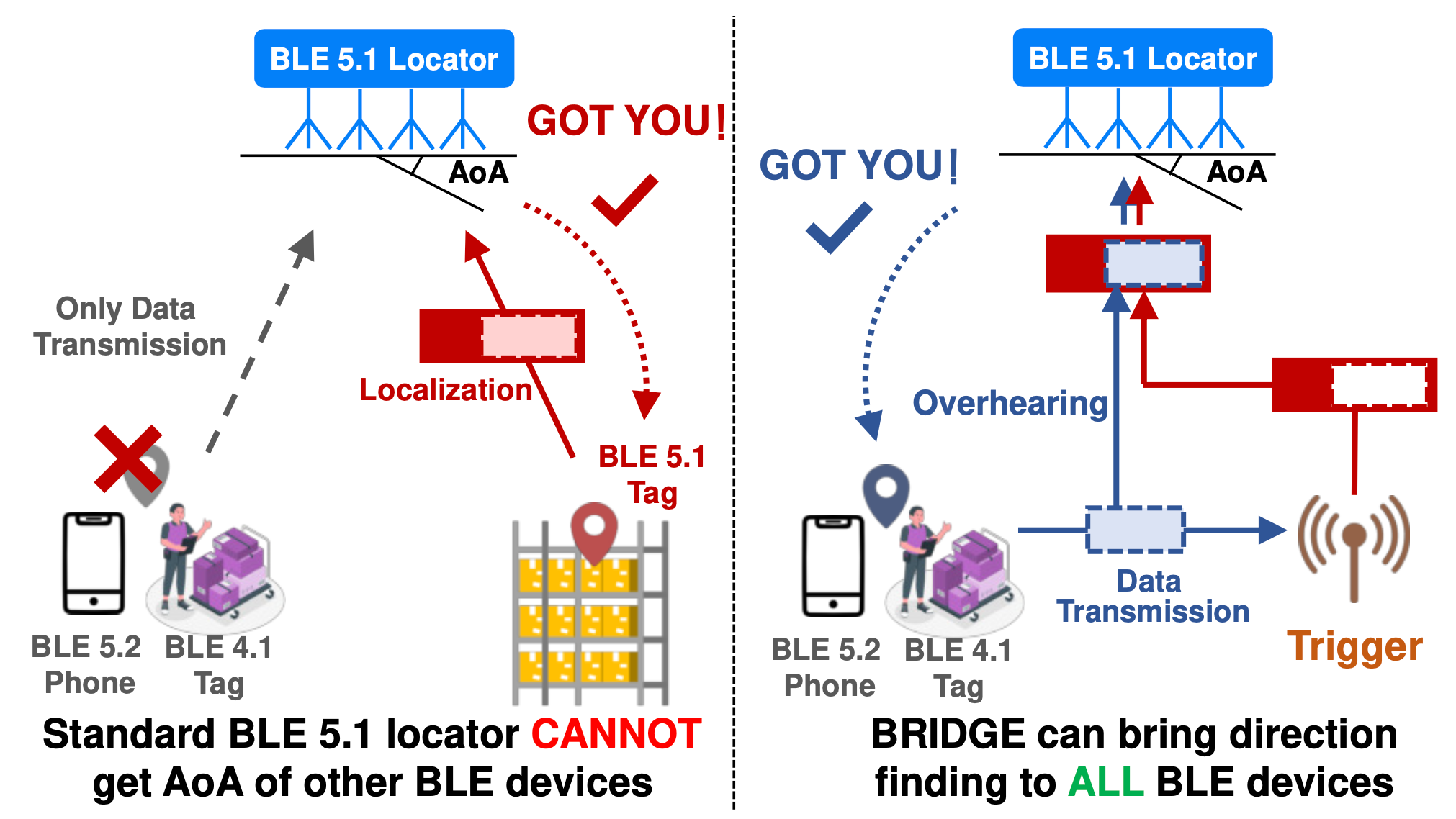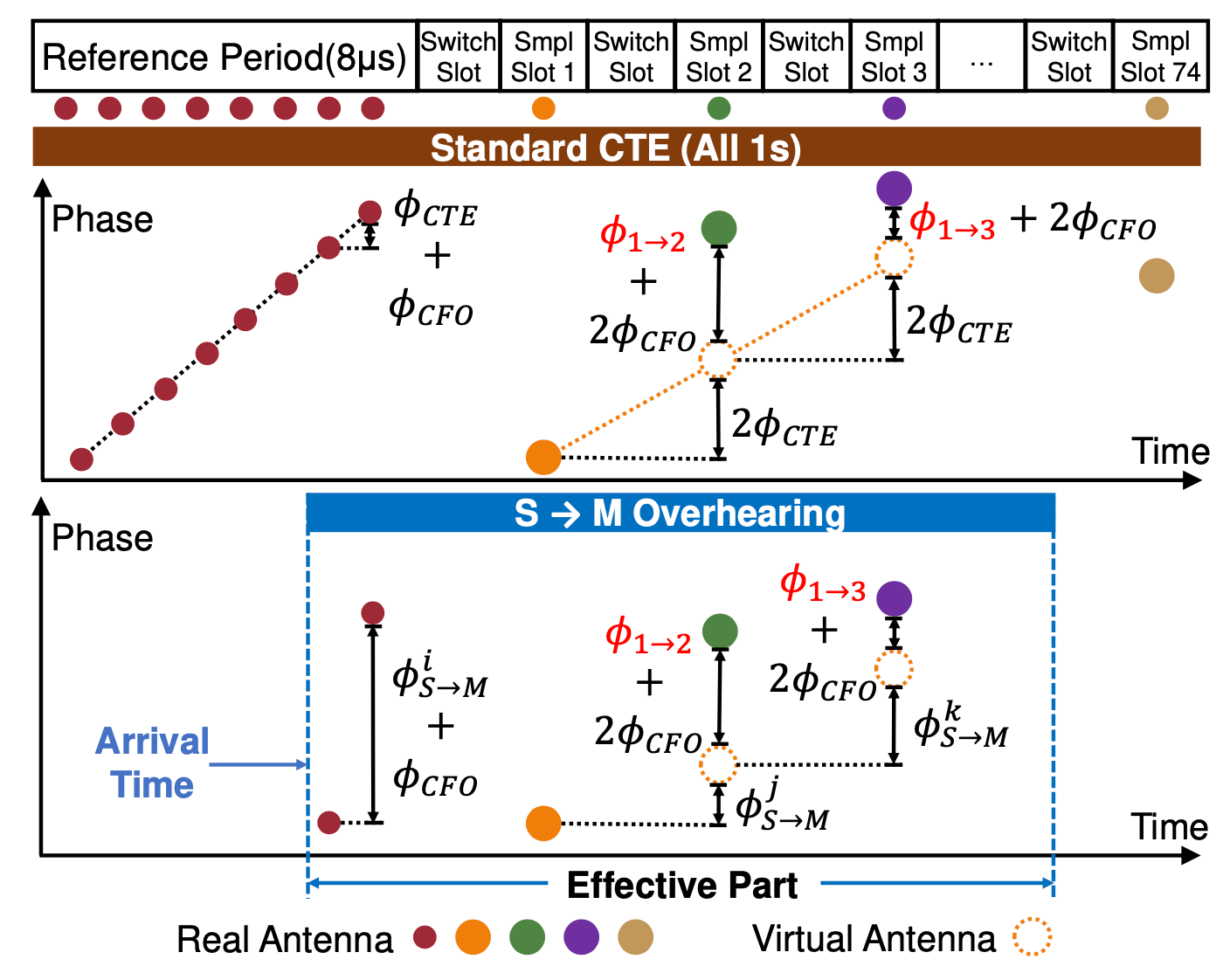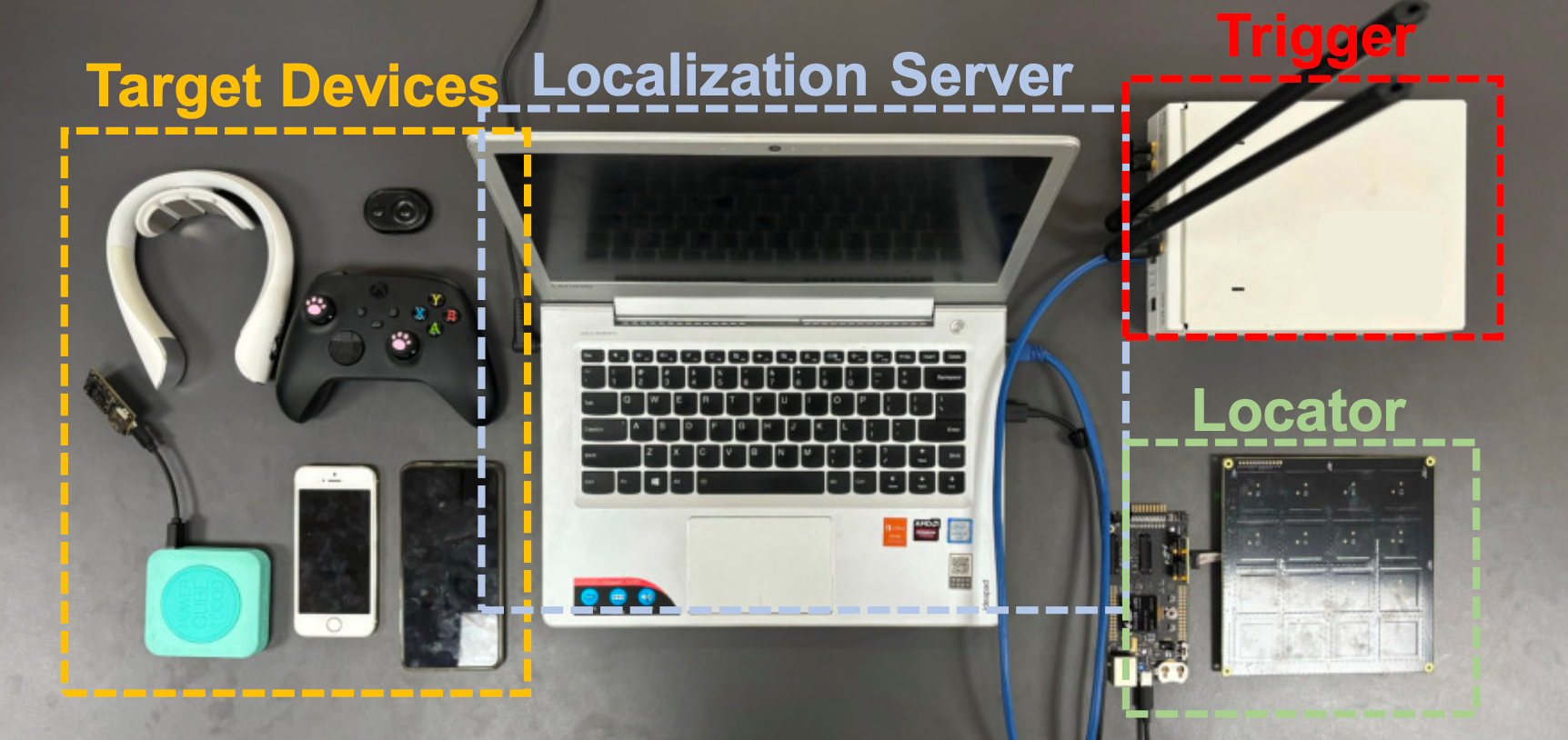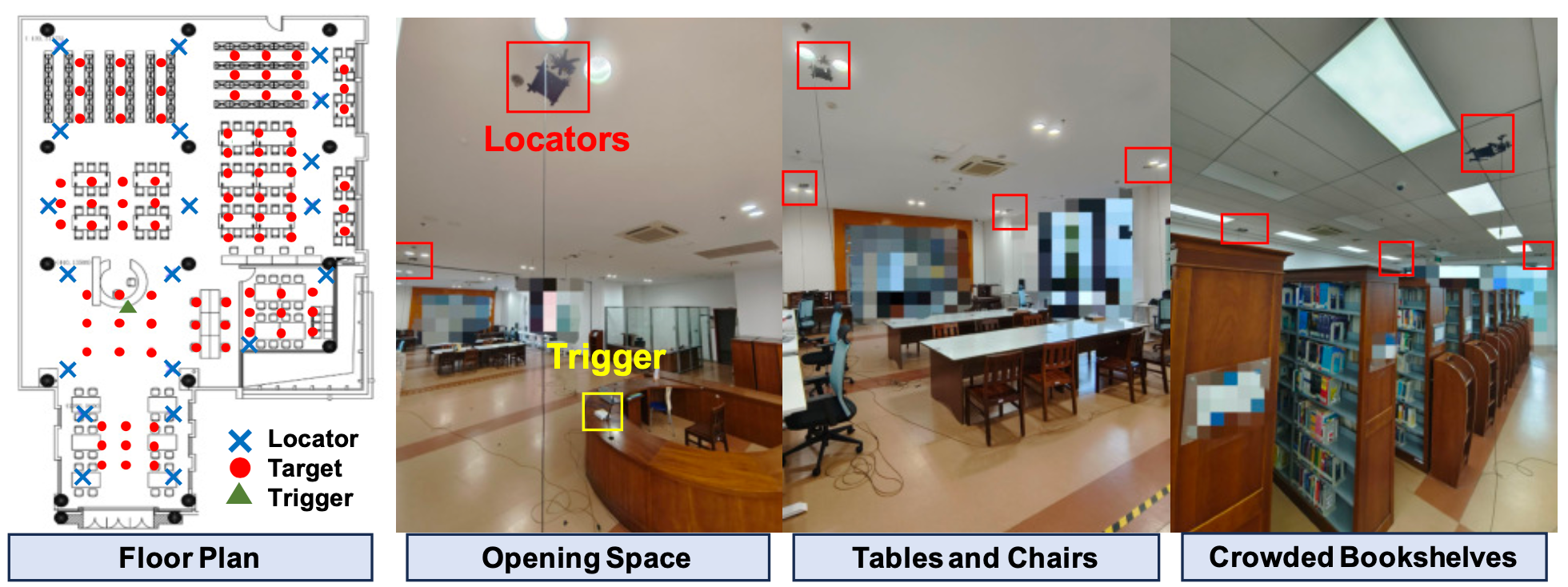Unlocking Bluetooth Direction-Finding for All Devices -- Bridging the Gap
Dongyao Chen 1 , Jingxian Wang 2 , Jiadi Yu 1 , Ling Ma 1 , Guangtao Xue 1
National University of Singapore 2
Abstract
Bluetooth Low Energy (BLE) direction-finding significantly improves localization precision, yet billions of legacy Bluetooth devices remain unsupported due to hardware limitations. We introduce Bridge, a novel system leveraging an additional trigger node to extend BLE direction-finding compatibility universally without modifying existing devices. Utilizing innovative nesting packets and precise angle-of-arrival estimation via signal overhearing, Bridge achieves remarkable localization accuracy comparable to native BLE 5.1 systems. Extensive evaluations in diverse real-world environments demonstrate Bridge’s practical applicability, showcasing its potential to revolutionize indoor localization technology.

Introduction to Bluetooth Direction-Finding
Bluetooth Low Energy (BLE) direction-finding is a powerful technology enabling devices to pinpoint locations with high precision. Released with Bluetooth version 5.1, this feature uses Angle of Arrival (AoA) estimation, significantly enhancing localization accuracy in various applications such as logistics, retail, healthcare, and smart industries. Despite its potential, a substantial challenge persists: billions of legacy Bluetooth devices (around $68\%$ of all Bluetooth devices) remain incompatible due to hardware and firmware constraints.
Bridge: A Universal Solution
The paper “Bridge: Enabling BLE Direction Finding Feature Compatible with All Bluetooth Devices” addresses this limitation by introducing an innovative system named Bridge. The Bridge solution employs a dedicated trigger node (Trigger) acting as a bridge between unsupported Bluetooth devices and locators. As depicted in Fig. 1, the Trigger synchronizes communication, enabling standard BLE 5.1 locators to recognize and localize even legacy devices.
Technical Challenges and Innovations
The critical challenge for Bridge was enabling direction-finding without modifying the existing hardware or firmware of Bluetooth devices. The authors solved this with the introduction of a “nesting packet,” which simultaneously transmits data intended for both the locator and the target device. Fig. 2 illustrates the systematic flow, demonstrating how the nesting packet facilitates this dual communication.

Further, precise AoA estimation through “overhearing” introduced unique challenges—namely uncertain arrival times and unstable signal phases. As presented in Fig. 3, the solution involved intricate packet synchronization and temporal adjustments ensuring the target device’s packets precisely overlap with the locator’s AoA sampling window.

Performance and Practical Implications
Experimental evaluations revealed impressive outcomes. The Bridge system achieved an average localization accuracy of $33.4cm$, nearly matching standard BLE 5.1 localization systems. It successfully extended compatibility to ten diverse Bluetooth devices, highlighting its universal applicability and practical impact in everyday scenarios, including smartphones, remote controls, and wearable devices (Fig. 4).

The real-world test environments (Fig. 5) demonstrated that Bridge works reliably across varied conditions—from open spaces to crowded indoor environments—thus solidifying its practical utility.
